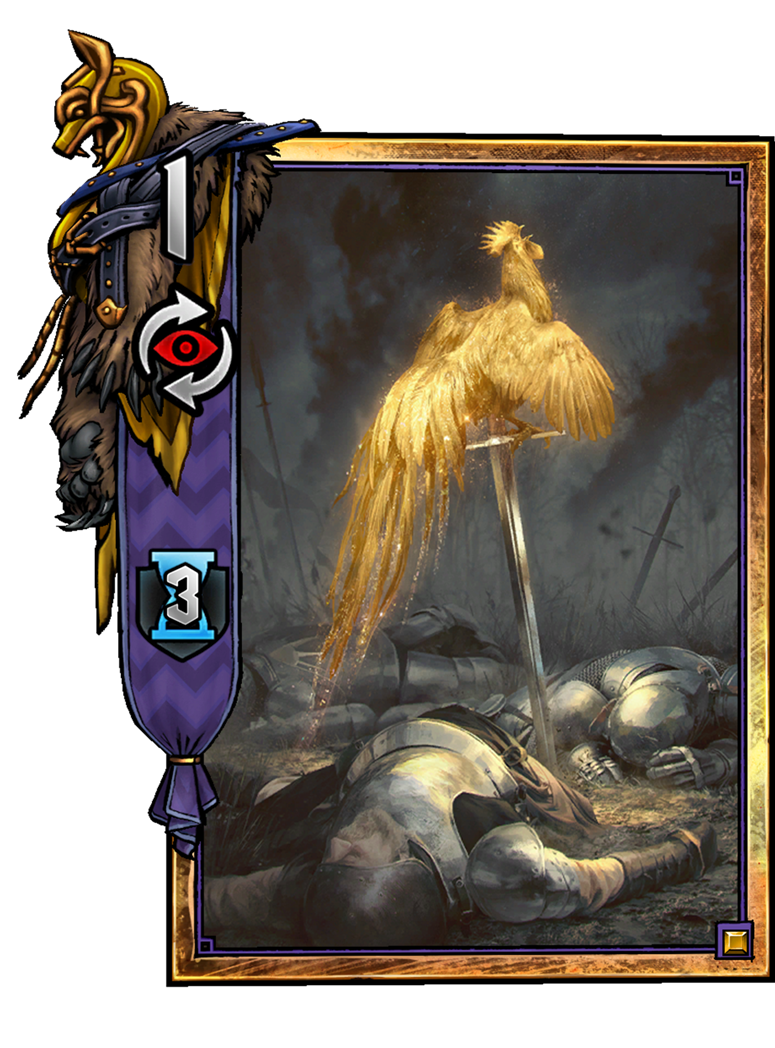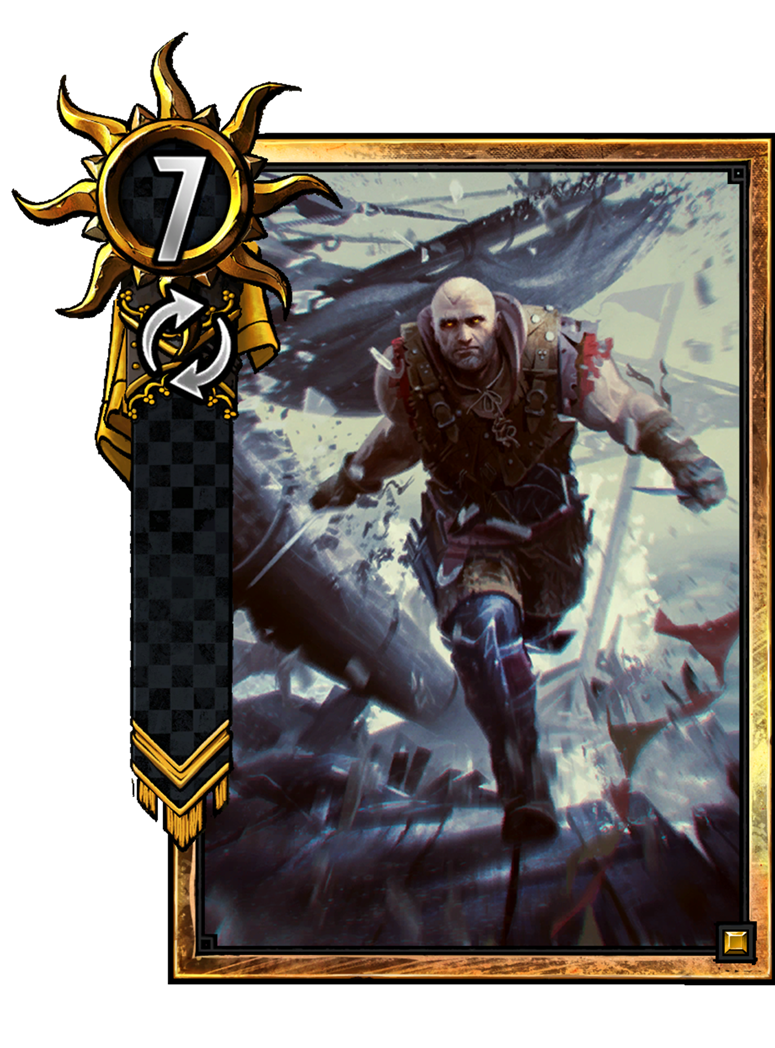Kambi, Letho, Succubus: How To Play & How To Counter
By Guest Contributor OtakuMZ

Introduction
One of the more frustrating moments in Gwent for inexperienced players is facing off against one of the those three infamous cards: Kambi (Skellige), Letho of Gulet (Nilfgaard), and Succubus (Monsters). When played against, they can induce a feeling of helplessness and unfairness because you need very specific tools to counter them. Without those counters, it is either an instant concede from your side or you have to fight a steep uphill battle. The trick is to choose the counters that will not heavily impair all the other matchups by providing further utility even against other archetypes. Equally important point is the recognition of the matchup as early as possible in the game because only then you can actively start fishing for the necessary countermeasures. In order to know that you play against one of these cards, a knowledge of the strategy behind them is of utmost importance.
You will find all those highlighted aspects covered for all three cards with some lore added as the topping in the chapters below.

Succubus
Card Description
Ability: If played on your opponent’s side, then after 2 turns, at the end of your turn, move the Highest other Unit on its row to your side.
Strength: 5
Group: Gold
Rarity: Legendary
Loyalty: Disloyal, Loyal
Faction: Monsters
Position: Multiple
Type: Beast
Flavor: Why fight? There are much better ways to work off excess energy…
Lore
A succubus (plural succubi) is a creature, sometimes considered “a demon”, resembling a highly attractive woman with the legs of a goat. She seduces human males, first appearing in dreams from time to time, then physically, and is interested only in men that have already come of age. Its male counterpart is most likely the incubus. Succubi are not particularly violent, though they draw energy from the men to sustain themselves, often until the point of exhaustion or even death of the victim.
Strategy
For Succubus to gain any value at all, it needs to steal more than five Strength because you give that much to your opponent in the first place when played as a Disloyal unit. If there is no good target, you generally wait until there is one - the later the better so they exhaust their chances of countering you. If there is no other choice left, it is also playable as a Loyal unit on your side but playing a Gold unit for a meager six Strength without an additional benefit is outright bad. Calculating the strength swing, you should apply the following formula:
Overall Strength Swing = (2x stolen unit’s Strength) - Succubus’ Strength
For example, stealing a 15 Strength King of Beggars results in a 25 (!) point swing (15 x 2 - 5 = 25). If we assume a Gold card should at least increase your board state by twelve, the Succubus should have stealing a 9+ Strength unit as the goal; resulting in a total of +13 points for your side. Sometimes, stealing a minion with less power can be beneficial, if it has an oppressing effect for your strategy, e.g. Savage Bear, or is prone to get more value later, e.g. Clan Tuirseach Axeman.
Recognition
The most important thing about preparing to counterplay a card is to recognize you are playing against it. In the case of Succubus, it is the easiest of the three cards looked at in this article. Though less popular than in last patch, Succubus is always something to watch for when facing Monsters, no matter if it is Dagon Fog or another Consume deck. If the round wears on and they have played no Golds, be especially wary for an eleventh-hour Succubus!
Counters
The easiest counter, even without specific cards, is to avoid stacking stats on a single minion. Try to balance buffs or apply significant buffs only after the Monsters opponent has passed.
Another possibility is to bait the Succubus by putting a reasonable high value minion of 6-8 Strength down. After it has came down and the minion was stolen, in our example, for a maximum swing of 9-13 points. Once the stealing effect has triggered, you can begin to play your real threats and resilient minions afterwards. Another bait option is to put a juicy target on the board just to move it away from the Succubus’ grip with cards like Drowner or Dwarven Mercenary. Make sure to wait until right before her timer goes off to dodge!
The last way to counter that pesky effect is Dimeritium Shackles (D-Shackles), which toggles “Lock” even on Gold cards and demotes them. Beware the opponent deploying their own Shackles or Fiend to unlock Succubus, however. A demoted Succubus can be Decoyed to turn her thieving power to your advantage as well!

Kambi
Card Description
Ability: After 3 turns, at the start of your turn, Spawn Hemdall.
Strength: 1
Group: Gold
Rarity: Legendary
Loyalty: Disloyal
Faction: Skellige
Position: Multiple
Type: Doomed
Flavor: When the time comes, the cockerel Kambi shall crow and awaken Hemdall.
Hemdall: Deploy: Destroy all Units on the Board. Clear all Weather. Banish all Allied Kambis. Strength: 16, Loyalty: Loyal,, Faction: Skellige, Position: Melee, Type: Doomed (Note: Hemdall spawns in the place of Kambi on your opponent’s side)
Lore
According to the beliefs of the inhabitants of Skellige, Kambi is a magical golden rooster whose task it is to awaken the mythical hero, Hemdall before the final battle of good and evil, Ragh nar Roog. Kambi is also the name of a rock off the coast of Hindarsfjall.
Strategy
The main strategy involved with Kambi is very straightforward. Win a round, preferably round one, with the help of any Skellige archetype that can deliver good power, such as Clan Tuirseach Axeman with weather (e.g. Biting Frost) and/or Savage Bear - Queensguards and/or Light Longship engines are options as well. After that, the deck tries to be at least on equal cards going into round three. Because you won round one and lost the second one, your opponent will start to lay a card in round three.
Play Kambi as your third-to-last card because it needs three rounds to activate. You should have saved your high-impact Gold cards for this round because you need to surpass the sixteen points that Hemdall will give your opponent when he triggers. This is achieved by Hjalmar (sometimes brought back by Renew), Geralt, and/or Avallac’h. During rounds one and two, use your draw and discard mechanics to find all your combo pieces and pray that Kambi (or in some cases, your Hjalmar) is not countered by D-Shackles. If the opponent has a list that is likely to have it, make sure to keep a toggle lock in your hand, whether Donar an Hindar or additional Shackles (Kambi decks run multiple of these in order to eliminate enemy gold strength in the final round).
Recognition
In the first turns or even the first round, Kambi decks are not completely obvious - the first thing to watch for is the Bran leader, since his thinning is usually essential to a Kambi player consistently locating the card. There might be some odd tech cards, e.g.Ocvist, which increase the likelihood of your opponent running a Kambi deck. Ciri is another such card - both of these sacrifice a value Silver/Gold slot for a reliable card advantage unit, which is incredibly important to any Kambi strategy. Discard and card draw mechanics like Clan an Craite Raiders and Avallac’h are more prominent in this combo-oriented deck to guarantee that they draw into all their combo pieces and therefore may also hint at the Kambi play.
Counters
The most obvious counter to lock Kambi with Dimeritium Shackles. It can be used in two ways though. You can either toggle Lock on Kambi himself to protect your board or you can demote your opponent’s Gold cards sothat they get destroyed by Kambi’s effect, too. As Hemdall adds 16 Strength to your board now, your opponent will need at least two Golds himself to have more power on his side. As Hjalmar’s buff is now countered by locking Lord of Undvik, negating Gold value has gotten way easier. The second option is especially appealing if you are prone to run out of cards before the rooster hits the board. For demoting opposing Gold cards, Dimeritium Bomb is another (less popular) option. A soft counter would be to play most of your own Golds in the last round to out-value the opposing player’s Legendaries. The Kambi player will run Shackles to deal with your Golds, but usually must keep one toggle in hand in case you Shackle the Kambi and he needs to retrigger it.
More theoretical or fringe options would be the following: One could be to load your board with Deathwish units that spawn enough power after their death to surpass your opponent’s board. One last (quite theoretical) option that could lead to a win would be a situation in which you were ahead enough in cards to be able to play your non-Gold high value minions (e.g. Dol Blathanna Protector or Crones) after Kambi triggered. Ultimately, Kambi is a rare enough strategy that there is never a reason to tech your deck against it in any meta - the best you can do is knowing the specific pacing of the card and how to spot it before it hits the board.

Letho of Gulet
Card Description
Ability: Deploy: If Spying, set own base Power to 1. Deploy: Banish 2 Units to each side of this Unit and Boost this Unit by their Power.
Strength: 7
Group: Gold
Rarity: Legendary
Loyalty: Disloyal, Loyal
Faction: Nilfgaard
Position: Multiple
Type: Witcher
Flavor: Witchers never die in their beds.
Lore
Letho of Gulet, also known as the Kingslayer, is a witcher from the School of the Viper and the main antagonist in The Witcher 2: Assassins of Kings. His closest associates are Auckes and Serrit, also kingslayers and witchers from the School of the Viper. For reasons which were initially unknown, he enlisted the help of Iorveth and the Scoia’tael to aid him in his plan to kill the kings of the Northern Kingdoms. To back his claim, Letho showed Iorveth a a severed head belonging to Demavend, King of Aedirn and Sovereign of the Pontar Valley.
Strategy
There are two main strategies involved playing the Kingslayer, not least because he is one of the few units that can be played on both sides of the board. These are either disrupting your opponent’s plays or using him to protect your own stats from being wiped off the board. All in all, this results in Letho being a very flexible and versatile card, despite the underwhelming stats.
Disruption. Let’s imagine the following scenario: your opposing Skellige has two Savage Bears and Morkvarg in his melee row. The bears will damage your minions by two when they come into play and the Werewolf provides carryover to the next round. By playing Letho in between those minions, you cancel out both effects. Furthermore, the units are banished and therefore cannot be resurrected by Priestess of Freya or Sigrdrifa - banishment is especially valuable against Skellige since it can brick their medics by robbing them of their desired targets. You can do things likewise with huge Ekimmaras or other buffed Monster units, but beware that Gold cards are not touched by the Banish effect.
If you want to punish an opponent even more, especially if he stacked most of his/her strength in one row try, this: The infamous wombo combo in this situation is Letho of Gulet into Dimeritium Bomb (D-Bomb) to reset Letho to 1 Strength, negating all the power of one row. This is an extremely tricky combo to pull off regularly, and in deckbuilding in compromises a Gold and Silver slot with arguably sub-optimal tech cards.
**Protection. **Letho can also protect your board strength when played on your side. For a Gold, he only adds a meager seven points, but if you play him on a row that is affected by weather (e.g.Skellige Storm) you can negate its effect without clearing. Such a play is not without risk as it is susceptible to D-Bomb or a combination of D-Shackle and a reset effect like Mardroeme or Peter Saar Gwynleve.
Swim introduced a particularly infamous wombo combo for this style of play called the “Fringilla Gambit.” The idea is to trick the opponent into passing quickly by playing low-tempo “surrender” cards like Ciri and Cantarella. After that, you proceed to play out your entire hand, stacking as many stats as possible on a single unit on your side, primarily with your Ambassadors. In the process, give it “Resilient” through Combat Engineer. Make sure that there is a small adjacent unit on the right side of the big one. Finally, play Fringilla Vigo between both units and give it resilient as well. This play is especially viable AFTER your opponent passed even though you will be at a card disadvantage because you do not play into a random Geralt: Igni (G:Igni). The following round (which you won), immediately play Letho to protect your 100+ board state against resets, weather, and G:Igni.
This is a very all-in tactic, but it feels “very satisfying” when it works and it’s as fun as it is rage-inducing. In the week of its inception it was dubbed by the community as the living embodiment of “Singleplayer Gwent” since it forces a Passed opponent who holds no counter to simply watch turn after turn as their fate is sealed. Though the omnipresence of G:Igni in the current meta (not to mention the uptick in D-bomb tech due to Swim’s latest iteration of Dorfs) makes this strategy less viable, the core pieces of its gameplan have not been nerfed, and if you so desire, you can still experience the absurdity that is “Singleplayer Gwent.”
Recognition
Recognizing Letho decks is a bit more difficult as he is indeed a tech card or part of the above mentioned wombo combo strategies. You can suspect the Fringilla-Letho combo when your opponent is playing either Ambassadors or Combat Engineers - and especially if he opens with Cantarella, since a normal Nilfgaard deck prefers to thin before using their draw tools. Nevertheless, if the enemy is clever, he/she can hide those plays until you passed because of a big Imperia Brigade. Another hint is an early Villentretenmerth which is sometimes teched into Swim’s list to force an early pass. An Operator into a copied Vicovaro Novice is another big hint. Ciri, once in almost every deck and now less prominent is another indicator that you play against this kind of deck.
The D-Bomb-Letho combo will likely hit you without warning, so beware of stacking too much value into a single row against Nilfgaard players. Part of the power of Letho is that the opponent will do their best to keep him as a surprise until it is too late.
Counters
The countermeasures against a Letho that is played as a disloyal unit on your side of the board are of a preemptive nature. You should avoid stacking units on one row and rather disperse you board over all three rows. This strategy is a more feasible after the Weather Update because Gold weathers are almost non-existent in the actual meta. Remember also that Letho can only target 4 adjacent units, so you can spread out your large targets with small units or Golds in between them.
A loyal Letho that merges value into one unit is counterable by either D-Bomb or D-Shackle with an additional Reset effect. After demoting Letho, G:Igni and Scorch will also annihilate the Kingslayer. Running any of those cards in the first place is, of course, meta-dependent. D-Bomb does not find huge applications outside the scenario depicted in this article (Consume’s large units and Dorf lists are generally the only common encounters). Shackles is not universally run either for similar reasons, but Peter Saar Gwynleve as well as Mardroeme and Margarita Laux-Antille are reasonable choices for many situations, so you can expect to see their Reset effects regularly. As already mentioned above, the combo is also very vulnerable to G:Igni before playing Letho, if not played carefully. The last way to interrupt a loyal Letho play is not letting you being forced into an early pass and to disrupt the buff stacking at the right moment.
Final Thoughts
All three cards have a significant different playstyle. Succubus can fit in almost every deck and does not need a particular setup (though Drowners and Frightener are always a good complement). It is more of a waiting game and an evaluation on when your opponent has brought out the biggest target possible or has the least options of countering it.
Kambi is a game-swinging finisher card that needs heavy setup and is reliant on consistency through discard and card draw mechanics. As you want to play Kambi literally as late as you possibly can, card advantage is more important here than perhaps anywhere.
Letho decks are kind of both. You can play him just as a disruption tool or in combination with D-Bomb which needs less setup but more timing. If you play the Fringilla Gambit, you rely heavily on getting your key combo pieces out of the deck (Engineers, Fringilla, Letho) - rather like Kambi’s reliance on heavy draw, but in this case simply dumping your entire hand in the first round.
All three cards are unique in their design and effect and are refreshingly different to many of the more mainstream Golds. They are cards of the sort we like to see more - rogue, eclectic threats that reward an opponent skilled enough to recognize them and a player skilled enough to pull of their combo power, but not overpowered enough to completely take over a meta.
